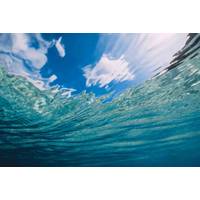
Chemical-Consuming Creatures Found Deep in Pacific Trenches
and the most extensive chemosynthetic communities known to exist on our planet."The Kuril-Kamchatka Trench runs about 2,900 km (1,800 miles) and is located off the southeastern coast of the Kamchatka Peninsula. The Aleutian Trench runs roughly 3,400 km (2,100 miles) off the southern coastline of Alaska and the Aleutian Islands.The newly observed ecosystems were dominated by two types of chemical-eating animals - tube worms that were red, gray or white in color and around 20-30 cm (8-12 inches) long and clams that were white in color and up to 23 cm (nine inches) long. Some of these appear to be

Tsunami Waves Reach Hawaii Following Major Earthquake in Russia’s Far East
along coastlines across much of the Pacific, including the U.S. West Coast."Due to a massive earthquake that occurred in the Pacific Ocean, a Tsunami Warning is in effect for those living in Hawaii," U.S. President Donald Trump said in a social media post."A Tsunami Watch is in effect for Alaska and the Pacific Coast of the United States."'Ring Of Fire'Several people in Kamchatka sought medical assistance following the quake, Oleg Melnikov, regional health minister, told Russia’s TASS state news agency.In Severo-Kurilsk in the northern Kuril islands, south of Kamchatka
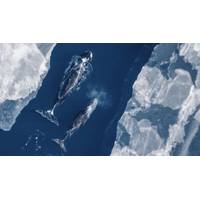
Whale Fecal Samples Link Ocean Warming to Rising Algal Toxins in Arctic Waters
Rising toxins found in bowhead whales, harvested for subsistence purposes by Alaska Native communities, reveal that ocean warming is causing higher concentrations of algal toxins in Arctic food webs, according to new research published in the journal Nature.Researchers from the Woods Hole Oceanographic Institution (WHOI) were a part of the multi-institutional, multi-year study that focused on this critical issue, which threatens food security for coastal communities that rely on marine life, including clams, fish, and whales, for food and other resources. Communities in Alaska are now asking researchers

An Unintentional Iron Fertilization Experiment
waters further and further away from Hawai‘i, Hawco said.“To the best we can tell, the impacts of anthropogenic iron on ecosystems is most intense in the North Pacific. During our cruises, bad weather prevented us from reaching beyond 42 north, but we expect that impacts would reach up to Alaska.”There are likely key areas of anthropogenic iron release in South America and Southern Africa that will grow over time, he says. It’s also likely that there were significant emissions during industrialization of the US east coast and throughout western Europe that would have added iron
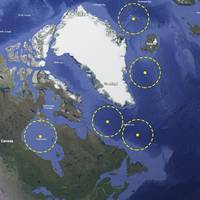
Mother Ship with USV Flotilla Could Boost Coast Guard Capabilities
provide extended range monitoring and on-scene presence, possibly up to 400 NM. This could allow two or three flotillas to monitor the Labrador Sea from Newfoundland up through Baffin Bay. Similarly, one mother ship and flotilla could monitor much of Hudson Bay. Another application could be the Gulf of Alaska and the Bering Sea.The USVs could be controlled from the mother ship or operate autonomously under some conditions. They would be suitable and seaworthy for the purpose intended and could have sufficient fuel capacity for 40 to 60-day endurance at moderate speed.The mother ship may be reinforced
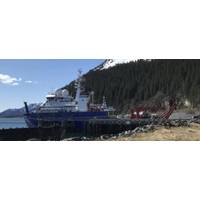
Satellite data from Ship Captures Landslide-Generated Tsunami
of the study. “Scientists have captured larger, earthquake-induced tsunamis using ship navigation systems. Our team had equipment in the right place at the right time to show this method also works for landslide-generated tsunamis.”On May 8, 2022, a landslide near the port city of Seward, Alaska, sent debris tumbling into Resurrection Bay, creating a series of small tsunami waves. The R/V Sikuliaq, a research ship owned by the National Science Foundation and operated by the University of Alaska Fairbanks, was moored 650 meters (0.4 miles) away. It was equipped with an external Global Navigation
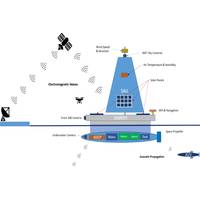
Autonomous Multi-Vehicle System Designed for Long-Term Arctic Studies
Computer Science. “Additionally, there remains much to uncover about Arctic phytoplankton and algae, which play a crucial role in the food web and influence ocean-atmosphere interactions. This new system could enhance our scientific understanding of their ecological significance while supporting Alaska’s indigenous communities in adapting to future changes in wildlife and food resources.&rdquo

Padilla, Murkowski Introduce Bill for Atmospheric River Forecasting
U.S. Senators Alex Padilla (D-Calif.) and Lisa Murkowski (R-Alaska) have announced bipartisan legislation that will reduce flood risks and bolster emergency preparedness by improving atmospheric river forecasting to predict the timing and location of these storms more precisely. The Improving Atmospheric River Forecasts Act would require the National Oceanic and Atmospheric Administration (NOAA) to establish a forecast improvement program within the National Weather Service. The legislation was announced as major atmospheric river storms bring high winds, heavy rain, and snowfall to California

NOAA Expands Water Level and Wave Dataset
so they can better prepare and respond to future events.”NOAA scientists will integrate CORA’s historical datasets into existing products, including the Sea Level Calculator and High Tide Flooding Outlooks.NOAA plans to release Coastal Ocean Reanalysis datasets for the West Coast, Hawaii and Alaska by late 2026
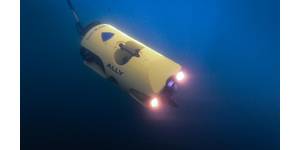
 February 2025
February 2025





